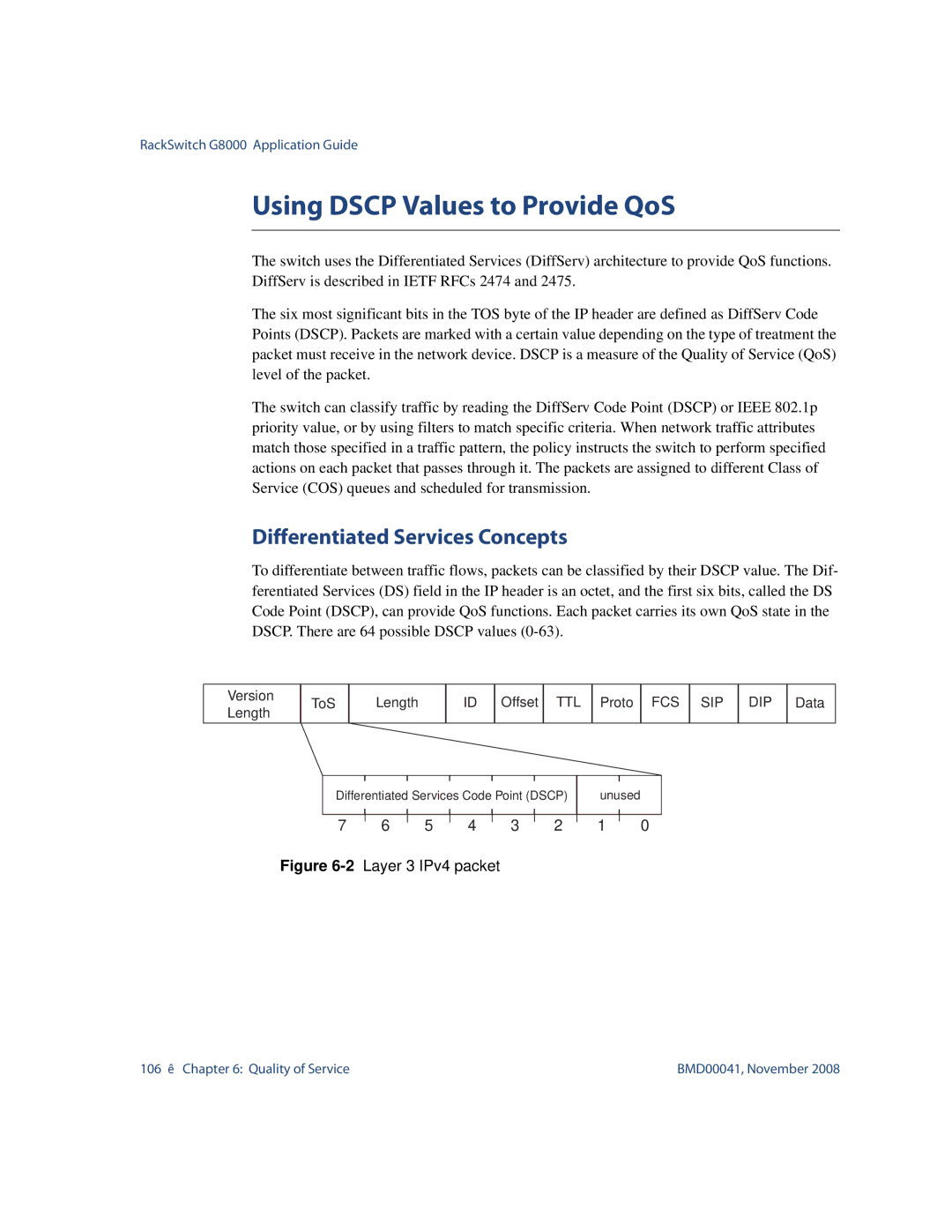
RackSwitch G8000 Application Guide
Using DSCP Values to Provide QoS
The switch uses the Differentiated Services (DiffServ) architecture to provide QoS functions. DiffServ is described in IETF RFCs 2474 and 2475.
The six most significant bits in the TOS byte of the IP header are defined as DiffServ Code Points (DSCP). Packets are marked with a certain value depending on the type of treatment the packet must receive in the network device. DSCP is a measure of the Quality of Service (QoS) level of the packet.
The switch can classify traffic by reading the DiffServ Code Point (DSCP) or IEEE 802.1p priority value, or by using filters to match specific criteria. When network traffic attributes match those specified in a traffic pattern, the policy instructs the switch to perform specified actions on each packet that passes through it. The packets are assigned to different Class of Service (COS) queues and scheduled for transmission.
Differentiated Services Concepts
To differentiate between traffic flows, packets can be classified by their DSCP value. The Dif- ferentiated Services (DS) field in the IP header is an octet, and the first six bits, called the DS Code Point (DSCP), can provide QoS functions. Each packet carries its own QoS state in the DSCP. There are 64 possible DSCP values
Version | ToS | Length | ID Offset TTL Proto FCS SIP | DIP Data | |
Length | |||||
|
|
|
|
Differentiated Services Code Point (DSCP)
unused
7 6 5 4 3
Figure 6-2 Layer 3 IPv4 packet
2
1
0
106 Chapter 6: Quality of Service | BMD00041, November 2008 |
